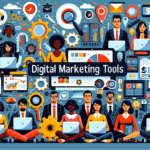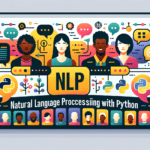Introduction:
In an era where technology is akin to a universal language, coding stands as the alphabet of this language. It’s not just a set of instructions; it’s a creative expression that molds the abstract world of computing into tangible, user-friendly experiences. This blog ventures deeper into this digital alchemy, illustrating how coding is the invisible craftsman shaping the technology surrounding us.
Coding:
Imagine coding as a conversation with a computer, where each line of code is a sentence in this unique dialogue. It’s a meticulous process that combines logic, creativity, and problem-solving. Coders are like composers, each line of code is a note in a symphony that orchestrates complex processes into harmonious functionality.
Types of Coding:
-
Front-End Development:
Think of front-end developers as the interior designers of the web. They blend aesthetics with functionality, ensuring websites are not only visually appealing but also intuitive to navigate. Their toolkit includes design principles, user experience (UX) insights, and a keen eye for trends.
-
Back-End Development:
These developers are the engineers behind the scenes. They manage the servers, databases, and application logic. Their work, though less visible, is what keeps the digital world ticking, ensuring security, data integrity, and performance.
-
Full-Stack Development:
Masters of versatility, full-stack developers navigate both the front and back ends. They’re like Swiss Army knives, equipped with a diverse set of skills to tackle various aspects of web development, making them invaluable in creating holistic digital solutions.
-
Game Development:
Game developers are the dream weavers of the tech world. They create immersive experiences, blending storytelling, art, and technology. Their craft goes beyond coding; it’s about creating worlds that captivate and engage.
-
Mobile App Development:
In a mobile-first world, these developers are the craftsmen of the small screen. They specialize in creating apps that are not just functional but also optimized for performance and user engagement on various mobile platforms.
Importance of Coding:
Coding is the heartbeat of technological innovation. It’s the force that turns ideas into reality, driving advancements in every field from healthcare to entertainment. Coders are the problem-solvers and pioneers, pushing the boundaries of what’s possible and opening doors to discoveries and solutions.
The Comic Language of Coding:
Coding’s lighter side is a testament to its versatility and capacity for creativity. These playful languages aren’t just for laughs; they’re an invitation to think outside the box and to see coding not as a rigid formula but as a canvas for creative expression. They remind us that at the heart of coding is the joy of creation.
Personalizing Technology to Your Needs:
Identifying Your Technological Requirements :
The first step in personalizing technology is understanding your specific needs. Whether for personal use or business, it’s crucial to assess what tasks you need to accomplish and what problems you’re trying to solve. For individuals, this might involve identifying tech that aids in daily activities like managing schedules or fitness tracking. For businesses, it involves understanding operational needs, customer management, and data processing requirements.
Customizing Technology for Enhanced Efficiency:
Once you’ve identified your needs, the next step is to customize technology solutions to meet those needs. This involves selecting and tailoring software, applications, and devices. For instance, configuring the settings on your smartphone to optimize its performance for your daily tasks, or customizing a CRM system to better align with your business processes.
Technology in Daily Life:
Simplifying Daily Tasks with Smart Solutions :
Technology can significantly simplify daily tasks. Smart home devices like programmable thermostats, smart lights, and voice assistants can automate routine home tasks. Mobile applications can streamline tasks like grocery shopping, budget tracking, and health monitoring, making everyday life more manageable and efficient.
Staying Connected in a Digital World:
Digital connectivity is vital for maintaining personal relationships, professional networking, and accessing information. Tools like social media, video conferencing, and instant messaging have made it easier than ever to stay connected with others regardless of physical distance.
Leveraging Technology for Business Growth:
Digital Tools for Business Enhancement :
Businesses can leverage a variety of digital tools to enhance their operations. CRM systems help manage customer relationships effectively, analytics tools provide insights into business performance and customer preferences, and automation software can streamline repetitive tasks, thereby increasing productivity and efficiency.
Innovative Approaches to Market and Customer Engagement :
Technology enables innovative strategies in marketing and customer engagement. This includes utilizing social media platforms for targeted advertising, employing data analytics for personalized marketing campaigns, and using chatbots for efficient customer service.
Overcoming Technological Challenges:
Navigating Privacy and Security Concerns :
With the increase in digital data, privacy and security concerns are paramount. It’s important to understand the risks and implement measures such as using secure passwords, regularly updating software, and being cautious about the information shared online.
Dealing with Technological Overload:
Technological overload can be overwhelming. To manage this, it’s important to prioritize digital tools based on their utility, limit notifications to reduce distractions and take regular breaks from screens to maintain digital well-being.
Fostering a Future-Ready Mindset:
Cultivating Technological Literacy :
Staying updated with technological trends and continually learning new tools and platforms is crucial. This includes understanding the basics of new technologies and being open to exploring and adapting to new digital solutions.
Preparing for the Future of Work :
The future job market is being reshaped by technology. Skills like digital literacy, adaptability to new tech tools, and the ability to work with AI and automation will become increasingly important. Preparing for these changes involves both formal education and self-guided learning in emerging technologies.
Conclusion:
Coding is more than a technical skill; it’s a language of the future, a bridge between human aspiration and digital reality. It’s a tool that empowers, inspires, and connects, transforming our interaction with technology into an experience that’s not just efficient but also enriching. As we continue to advance in this digital age, coding remains our most reliable compass, guiding us toward a future where technology and human creativity coexist in harmony.




